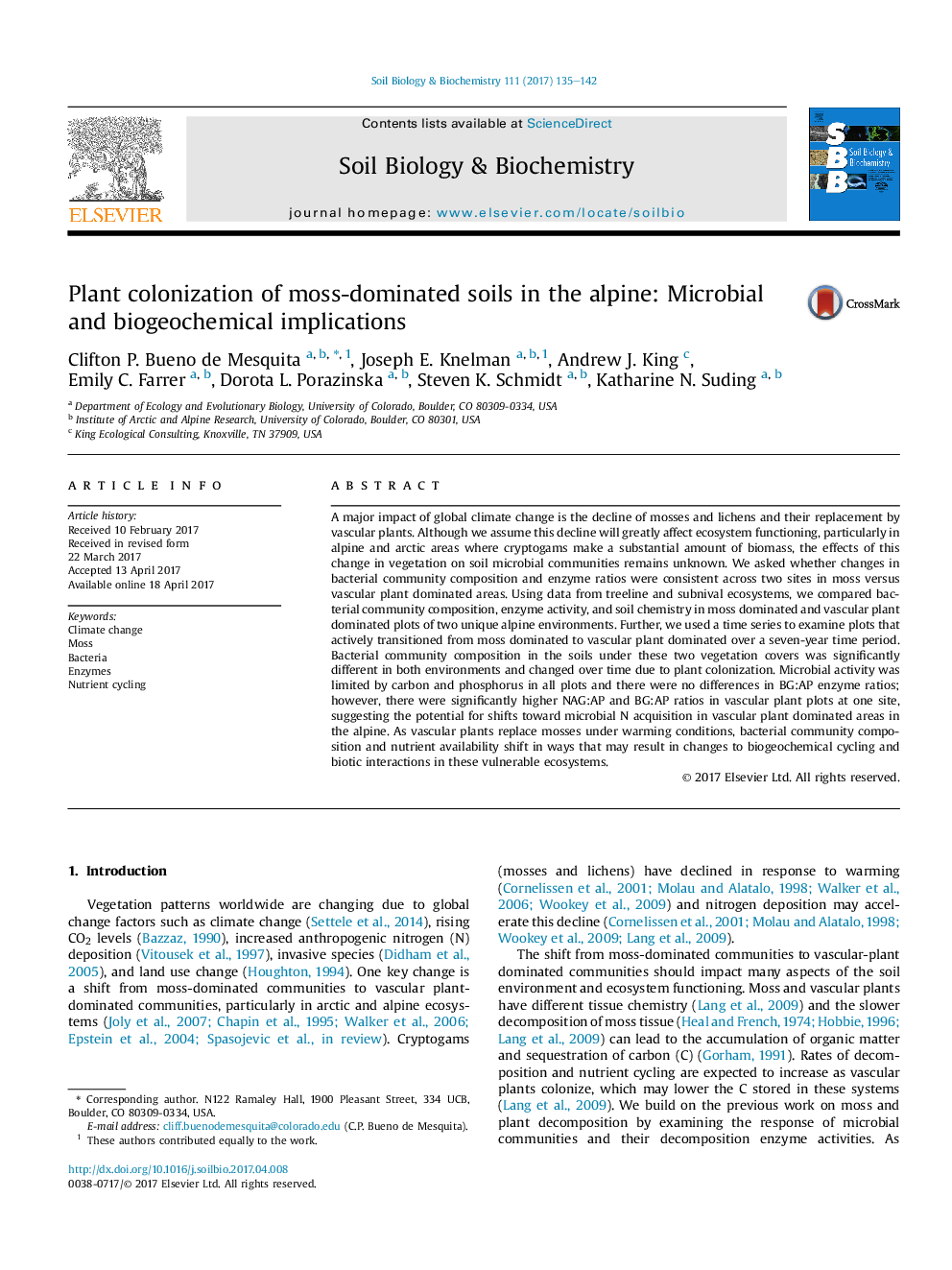| Article ID | Journal | Published Year | Pages | File Type |
|---|---|---|---|---|
| 5516293 | Soil Biology and Biochemistry | 2017 | 8 Pages |
•Across two alpine sites we found differences in bacterial communities associated with moss and vascular plant vegetation.•Time series over 7 years of moss communities that actively transition to vascular plant show defined, predictable shift in bacterial communities.•Soil exoenzyme production demonstrates similar carbon and phosphorus nutrient limitations across all alpine samples.•More highly carbon-constrained soils show little biogeochemical responses to shifts of moss to vascular plant communities and related bacterial shifts.•Less carbon-constrained soils show a slight shift in microbial resource allocation toward nitrogen acquisition.
A major impact of global climate change is the decline of mosses and lichens and their replacement by vascular plants. Although we assume this decline will greatly affect ecosystem functioning, particularly in alpine and arctic areas where cryptogams make a substantial amount of biomass, the effects of this change in vegetation on soil microbial communities remains unknown. We asked whether changes in bacterial community composition and enzyme ratios were consistent across two sites in moss versus vascular plant dominated areas. Using data from treeline and subnival ecosystems, we compared bacterial community composition, enzyme activity, and soil chemistry in moss dominated and vascular plant dominated plots of two unique alpine environments. Further, we used a time series to examine plots that actively transitioned from moss dominated to vascular plant dominated over a seven-year time period. Bacterial community composition in the soils under these two vegetation covers was significantly different in both environments and changed over time due to plant colonization. Microbial activity was limited by carbon and phosphorus in all plots and there were no differences in BG:AP enzyme ratios; however, there were significantly higher NAG:AP and BG:AP ratios in vascular plant plots at one site, suggesting the potential for shifts toward microbial N acquisition in vascular plant dominated areas in the alpine. As vascular plants replace mosses under warming conditions, bacterial community composition and nutrient availability shift in ways that may result in changes to biogeochemical cycling and biotic interactions in these vulnerable ecosystems.
